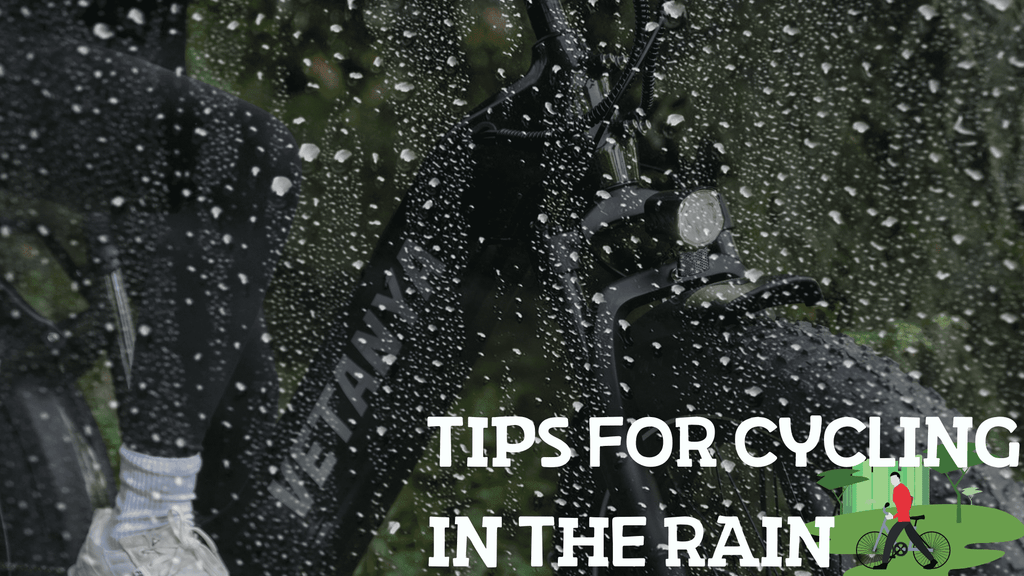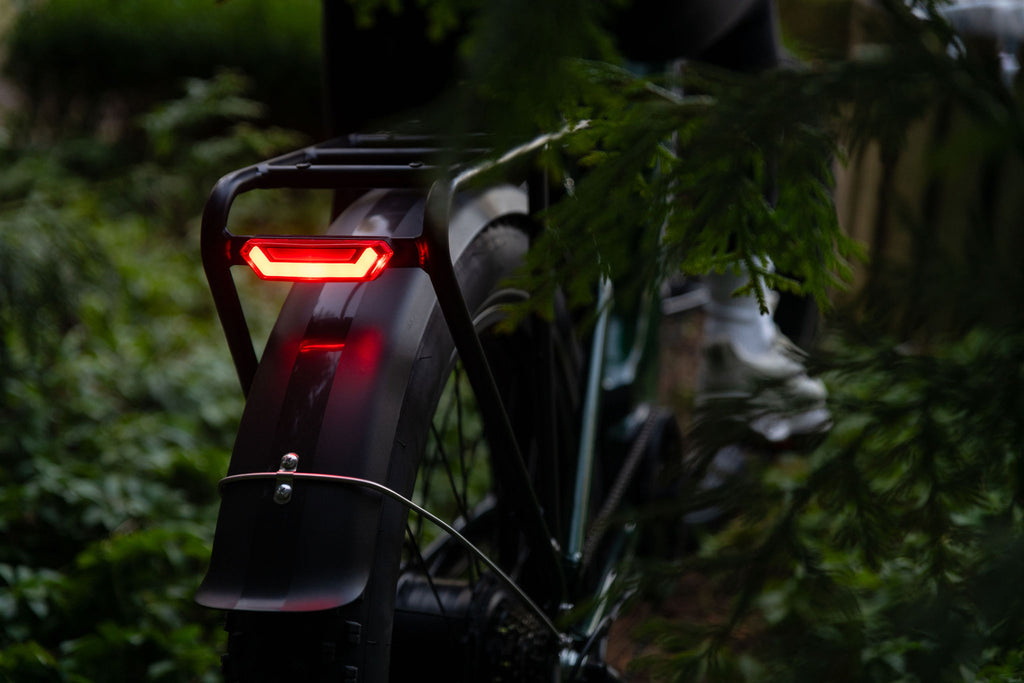·
11 tips for cycling in the rain | how to stay safe and dry

Riding an e-bike in the rain is not only exciting but can equally be challenging and that is why careful preparations become deliberate to guarantee your safety and comfort. From picking the correct outfits to the configuring of your bicycle, there are important parts that everyone needs to consider. Though it may not be a regular cycling choice, cycling in the rain can go a long way in offering you a new experience and helping you polish your cycling skills. Getting into dry clothing and checking your brakes before driving into rainy weather is a fundamental thing. Learning how to get through the rain without using it as an excuse to stall your training program is instrumental to keeping the course. after revisions and with a positive attitude, cycling in the rain can be a pleasant adventure, making you feel more confident and stronger. Thus, whenever the raindrops fall, be sure to mount your bicycle, apply these simple principles, and get ready for an adventurous ride in the wetness.
Riding An Electric Bike In The Rain
Electric bikes are generally designed to withstand rainy conditions, being water-resistant for safe riding or parking in wet environments. However, it's essential to ensure that your specific model has been tested for such weather conditions, as not all manufacturers or models may be suitable. Avoiding puddles or standing water is advisable to prevent potential damage to the bike's electronics. Despite varying designs, electric bikes offer a reliable and comfortable riding experience in all weather, with brands like Vetanya adhering to IP60 water-resistant standards, ensuring peace of mind when riding or parking in the rain.
Wear a Rain Jacket
A suitable waterproof jacket should be a necessity for those who do biking during the rain. A waterproof coat, made of an outer layer and a lining, is a good option for hiking on days that are bad weather. Ensure that whatever intensity the rainfall comes, you are encapsulated in these layers. In wetter and colder weather the extra warmth becomes quite important. Rain-proof cycling jackets with water-creating design are enough for small rains but in heavy rains you have to wear a fully waterproof jacket or shell. The minimal water-resistive timeline for a reliable and perfect cycling jacket should rate at least 5,000 mm, while 10,000-20,000 mm would be excellent.
Wear-resistant Thermal Layer
Proper layering is crucial for cycling in wet conditions. Layering enables heat retention while facilitating moisture escape. Begin with a base layer like a long-sleeve shirt or thermal top for extra warmth, especially on colder days. Follow up with a waterproof outer layer to shield against rain. Typically, rain gear consists of a removable waterproof shell for convenience post-ride.
Brightly Colored Clothes
When cycling in rainy conditions, it's crucial to don bright colors or reflective clothing to enhance visibility for drivers and fellow cyclists. These attire choices significantly improve visibility, especially during low-light situations like foggy or rainy days. Furthermore, incorporating reflective strips on your arms and legs further enhances visibility in darkness. Installing bright lights on your bike can also boost visibility.
Use Headlights And Taillights

During times of low visibility, such as in rainy conditions, the importance of using head and tail lights while riding increases significantly. When you're on your electric bike, sharing the road with various types of vehicles, some may obscure cyclists from view, making visibility crucial.
Prior to embarking on your ride, it's essential to contemplate employing blinking head and tail lights, whether mounted on your helmet or handlebars, to maximize your visibility to other road users.
Brake Early
Similar to operating a car, wet weather can pose challenges for bicycles when it comes to stopping completely.
While numerous electric bikes now feature disk brakes instead of the rim brakes typically found on conventional bicycles, offering improved performance in rainy conditions, it remains crucial to anticipate braking earlier than usual when riding your ebike in wet conditions.
Furthermore, it's essential to take into account tire pressure; braking early becomes particularly crucial to prevent hydroplaning, especially with high-pressure tires.
Use Mudguards or Fenders
Mudguards simply referred to as fender, can do a great job of reducing the amount of water and mud splashed at the time of rainy cycling. Besides they keep you dry also they safeguard bike components from grime and dust. They may not necessarily come as a standard piece with all bikes, but they can be easily installed on most models.
Properly Maintained Before Riding in the Rain
Before riding the bike during a period of rain, it is important to make sure the bicycle is well-maintained and working fine. This becomes more than just maintaining security and pleasure by the side. It equally goes down to the extension of your bike's life span. Start with the inspection of your tires, and make sure that they are properly inflated and free from cuts or any signs of fabrication. Besides, make sure that your linkage is not soiled. Check for any rust or dirt being accumulated. Devoting time to a comprehensive inspection under dry weather conditions before each ride will promote safety and extend the lifespan of your bicycle.
Cleaning Your Bike After Riding In The Rain
Besides brushing and cleaning the bike after the wet ride, performance maintenance and prevention of rust and corrosion also demand this. Begin the process of cleaning your bike by using water to do so, either using a hose or a spray bottle, to drop the mud, dirt, and debris off the frame and components. If any area is stubbornly soiled - use a soft brush or cloth for it. After the rinse, place a degreaser in the drivetrain, then use towels or cloths to dry your bike. To conclude, clean it with water and soap, then apply bicycle lubricant or oil to prevent rusting and corrosion.
Choose The Right Route
When cycling in rainy conditions, opt for routes with minimal traffic and fewer puddles. Heavy traffic poses risks due to reduced visibility, so prioritize quieter side roads and pathways. Furthermore, steer clear of deep puddles or wet road sections as they can compromise traction, elevating the likelihood of slipping or sliding.
Don’t Cycle When It’s Lightning
It's fun to cycle under the rain up until the point that going outdoors wet on foot or by vehicle isn't safe anymore. When the rain is so heavy that you can barely see through it and when the lightning brights up the surroundings, you shouldn't cycle as you put your life at risk because there are such dangerous conditions. Lightning strikes and drownings are unfortunately common during thunderstorms. It is a risk that is surely not worth taking.
Enjoy Your Rainy Ride!
Cycling in the rain presents challenges but can also offer enjoyment. Prioritize safety by wearing appropriate gear and staying vigilant of your surroundings. Follow the provided tips to minimize accident risks. With precautions in place, embrace the rainy ride with confidence!
Purchase Your Next Electric Bike With Vetanya
E-bikes are rapidly becoming one of the most patronized and prevalent modes of transportation worldwide. If you are still wondering whether to buy an e-bike or not, kindly ask Vetanya now. Leveraging our extensive experience, our team can address any inquiries you may have regarding e-bikes and facilitate a smooth purchasing experience for you.
Contact Vetanya today to discover which of our electric bikes suits you perfectly, regardless of the weather conditions, rain or shine!




























